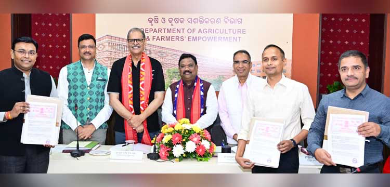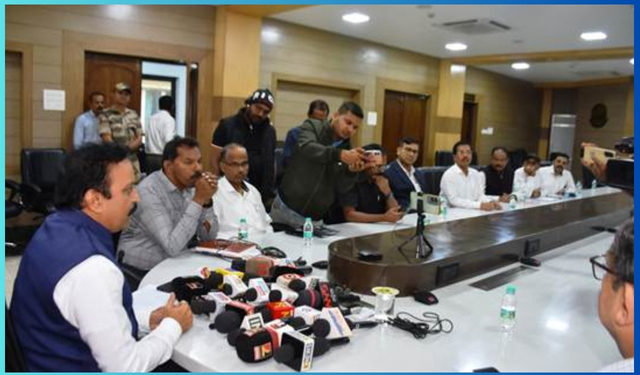Odisha Targets 500 Crore Annual Egg Production by 2029

State aims for self-sufficiency in protein-rich food and rural income generation through poultry farming
Bhubaneswar : Odisha has unveiled an ambitious plan to produce 500 crore eggs annually by 2029, marking a major step toward achieving nutritional self-sufficiency and strengthening the rural economy. Announcing the target at the state-level World Egg Day celebration held at Lok Seva Bhawan in Bhubaneswar, Fisheries and Animal Resources Development (F&ARD) Minister Gokulananda Mallik said the state is steadily advancing toward becoming a leading hub for egg production in eastern India.
Speaking at the event, Minister Mallik said Odisha currently produces about 1.17 crore eggs per day. “The per capita availability of eggs in the state is around 80 per year, while a balanced diet requires about 182 eggs per person annually. Our mission is to bridge this nutritional gap and make Odisha self-reliant in egg production,” he stated. The minister urged young entrepreneurs across all districts and blocks to explore poultry farming as a profitable and sustainable enterprise that can contribute significantly to both economic growth and public health.
Mallik described eggs as one of the most affordable and complete sources of animal protein, highlighting their crucial role in combating malnutrition. “Eggs provide essential nutrients that are vital for children’s physical and cognitive development,” he said. “By promoting egg production, we are not just improving diets — we are investing in a healthier, stronger, and more productive generation.”
The minister underscored that expanding the poultry sector could play a transformative role in ensuring food and nutritional security while generating employment and entrepreneurship opportunities in rural areas. Odisha’s poultry industry, which has already seen strong participation from local farmers and women’s self-help groups, is expected to receive additional support through government incentives, training, and infrastructure development under the department’s upcoming strategic plans.
Experts at the event emphasized that achieving the 500-crore-egg target will require scaling up both backyard and commercial poultry farms, ensuring access to quality feed, and enhancing disease management practices. They also noted that improved supply chains and marketing networks will be essential to ensure that eggs reach every household, particularly in remote and undernourished regions of the state.
The state-level event coincided with the global celebration of World Egg Day, observed every second Friday of October to promote awareness about the nutritional benefits of eggs. This year’s theme, “The Power of the Egg: Packed with Natural Nutrition,” focused on encouraging greater egg consumption as part of a balanced diet.
Odisha University of Agriculture and Technology (OUAT) Vice-Chancellor Pravat Kumar Roul called upon citizens to collectively work toward making the state self-sufficient in egg production. “Every family and farmer can contribute to this mission. By increasing local production, we can ensure access to affordable nutrition for all,” Roul said.
As part of the celebrations, the F&ARD Department organized a series of awareness campaigns in schools across Bhubaneswar, educating students about the health benefits of regular egg consumption. Eggs were also distributed to children in orphanages in the city, reinforcing the message that nutrition is a shared social responsibility.
Officials noted that Odisha’s poultry sector has shown consistent growth over the past few years, supported by government policies that encourage private investment and innovation. The state’s upcoming five-year plan for the livestock sector is expected to include focused measures for scaling up egg production, developing hatcheries, and supporting poultry entrepreneurs with access to credit and training.
By targeting 500 crore eggs annually by 2029, Odisha not only aims to close the nutritional gap but also to establish a robust poultry-based economy that empowers rural communities. The initiative underscores a dual objective — ensuring every citizen has access to affordable protein while enabling farmers and entrepreneurs to build sustainable livelihoods through poultry farming.









